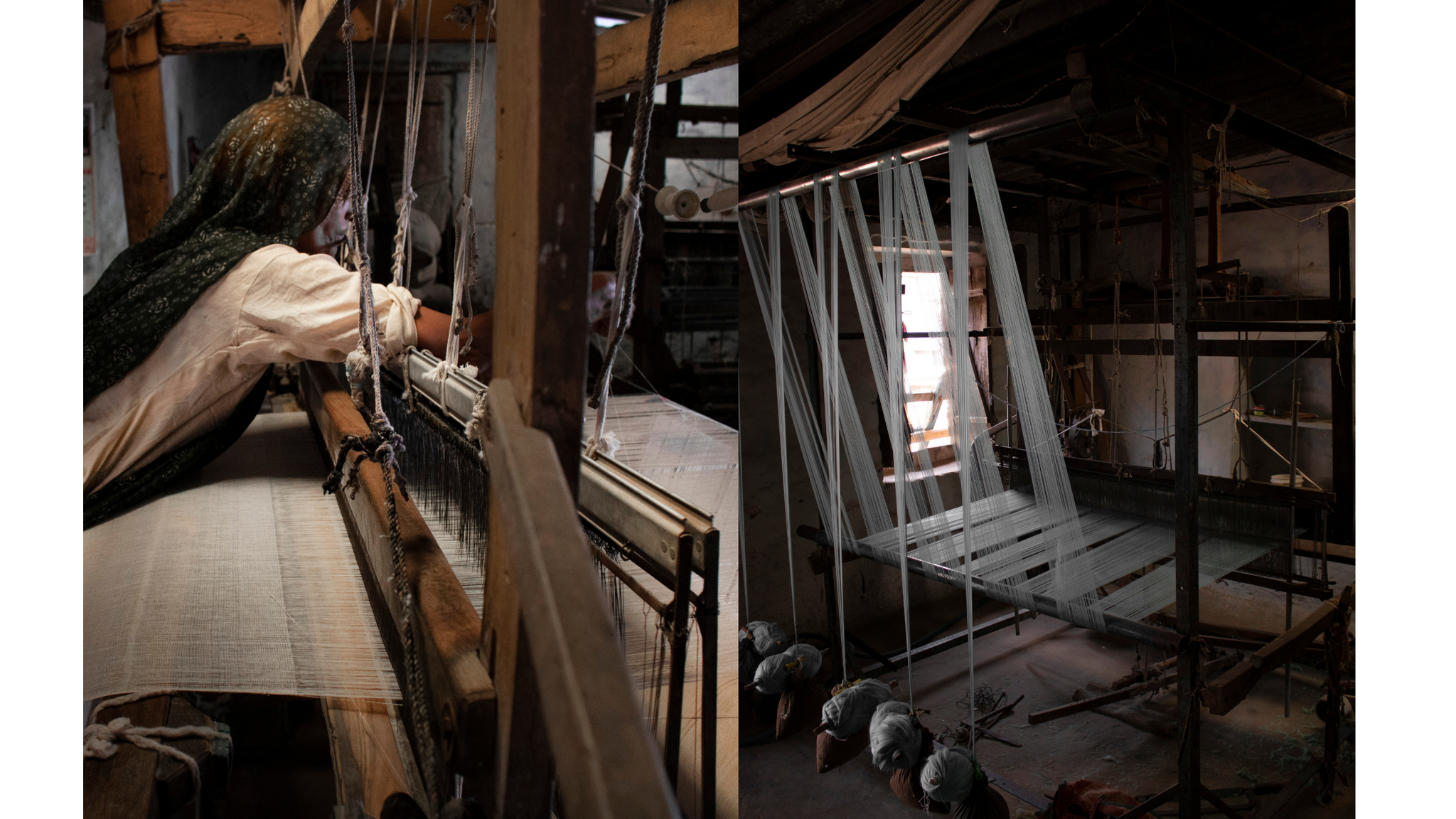“I have always been a very close observer of human silhouette, persona and styles. This has been fundamental in my inclination towards fashion design. Since India is a country of diverse culture, craft and textile, its local artisans and their techniques inspire me the most.”


Hailing from a small town in upper Assam, folk tribal cultures, traditional North Eastern crafts and textiles have been the core inspiration for designer Manjushree Saikia. “The core of art & craft really touched me when I was studying Textile Design at the National Institute of Fashion (NIFT), Mumbai.”
Ura Maku was born from the realisation of the responsibility a designer holds; to be mindful with the resources he/she already has in the form of both nature & craft. After visiting several craft clusters in India, Manjushree was stunned by their humility and grounded value. This is when she understood the importance of not only craftsmanship but also mindfulness towards humanity. The design philosophy of the brand lies in the name itself. Ura means to fly and Maku is the shuttle in weaving. “Ura Maku is the story of every person who dares to fly yet is rooted to their cultural values”.


Photo Credit : URA MAKU / Ura means to fly and Maku is the shuttle in Weaving.
Growing up in the culturally diverse region of north-eastern India, Manjushree tells us about her inspiration, cultural values and design philosophy in this exclusive conversation.
Tell us a little bit about your design process. From start to end what’s the process of creating a collection?
Each collection is explored around a theme or rather a state of mind. Every time, we come up with a mind state with of our muse i.e. ‘Breaking the Cocoon’ or ‘Acceptance of Transience’. We imagine that our muse and in turn our client is progressing with society. Once that is narrowed down, we work on the elements of design. Rhythm, unity, embroideries are all explored, however, we try to keep them minimal. Our Hakama pants, etc are tailored with a striking balance of rhythm and structure. That’s where the inspiration comes from and then we pick up the elements of design and go about designing from there.

Check out their entire collection here
You suggest that you are tied to your roots and traditions but yet your pieces are very modern with sleek, contemporary silhouettes. How do you strike the correct balance?
A lot of my silhouettes are inspired by historical evidence from fashion. Whether it is Yves Saint Laurent or Yohji Yamamoto, they have been huge inspirations. While studying Textile Design, we were taught that every piece of fashion historically has a lot of stories within it. Every fabric has a different flow to it, i.e. home furnishings have to me thicker, apparel weaves are different. I was also into styling, creative direction and freelancing as a stylist and so I always had this aesthetic.
When I started Ura Maku, I wanted to use rooted traditional textiles and explore them with modern / unique silhouettes. So whether it is tea dying, power suits or exploration of traditional fabrics to give them a global appeal, this has been the brand’s DNA and USP. I am working directly with weavers. The traditional motifs are always there in my work but I try to minimize it for the global audience. I feel the minimal aesthetic is the most difficult to design. At Ura Maku, I design a lot of power suits because they define the muse we have. I come from a small town so I have been an aspirant. Someone who is rooted can fly high with confidence.

You talk a lot about your culture and traditions. What influence has your family had on you as a designer and also on the brand at large?
My entire family, village, the entire environment has a big impact on me as a textile designer.
I grew up with my grandmother. She has a very motherly influence on me. She has taught me everything. My first memory is with her. Because she is from a village of Assam, my family has always been surrounded by textiles. My aunt hand spins and weaves textiles. This is a domestic way of life for them and part of our traditions. We would weave mekhela chadors, give it to others, perform Bihu; we would do it at home itself.
I go back to my family to learn traditional techniques. Sometimes they also help me translate when interacting with local weavers (when I don’t know certain local terms, etc.). They also help me source a lot of fibres such as Eri silk yarn, Moga silk yarn. It is very expensive so it is very difficult to get a pure form of it. They help me source the pure form.

The coronavirus pandemic had disrupted the fashion industry drastically. How have you coped with it and what have been your biggest learnings as an entrepreneur?
Because I am a young designer I was able to cope with it. I started in 2018 so it has just been 2 years. So being small helped me. If I had a big team, I don’t think I would have been able to sustain. We talk so much about sustainability, however, when we are doing business everyone is working for profit. Its when everything came to a standstill that we had time to reflect on things around us. So for me as a human being, being able to learn that we all equal, regardless of our work / position was a huge realisation. That pause and reflection was important. Also to figure out my goals, short and long term. Because we are so busy in life we sometimes don’t get time to reflect. So the time has definitely taught me a lot.
As shared with: Prerna Kalra, Canvas & Weaves



Leave a comment